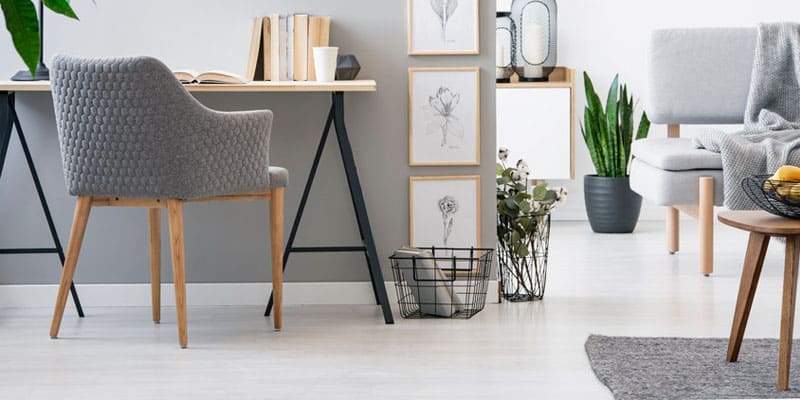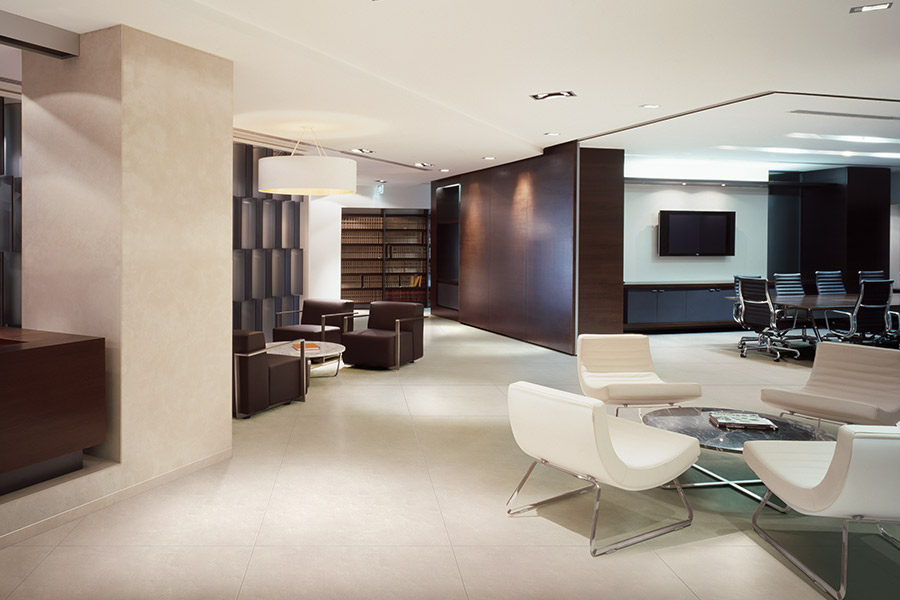
black couch in a minimalist living room with colorful wooden panel - rendering
Policrete Floors: The Ultimate Guide to Liquid Porcelain Technology
Stylish, long-lasting, and environmentally friendly, policrete floors should be on your short list of flooring

Stylish, long-lasting, and environmentally friendly, policrete floors should be on your short list of flooring options. Resinous flooring known as policrete makes use of liquid porcelain technology to produce a glossy, seamless floor. What are policrete floors, how are they built, how are they customised, and how are they maintained? All of these questions and more will be answered in this article. After reading this piece, you will have a better grasp of the many advantages of installing policrete flooring in your house or company.
What are policrete floors?
Resinous flooring known as policrete makes use of liquid porcelain technology to produce a glossy, seamless floor. Whether it be concrete, wood, tile, or metal, liquid porcelain, a combination of water, resins, colours, and additives, may be poured right on top. After bonding with the substrate, the liquid porcelain becomes hard and resistant to wear from foot traffic, moisture, chemicals, and temperature swings. A well maintained Policrete floor may last up to 20 years and has a thickness of just 2 to 3 mm.
What are the advantages of policrete floors?
Compared to alternative flooring solutions, policrete floors offer several benefits, including:
- Durability: Policrete flooring lasts a long time and can withstand a lot of wear and use without showing signs of wear and tear or being damaged. They retain their lustre and quality despite constant exposure to rain, snow, salt, and other pollutants as well as extremes in temperature.
- Resistance: Mould, mildew, germs, fungus, and insects have little chance of taking hold on a Policrete floor. They are not breeding grounds for dust or allergies and are simple to disinfect. They won’t melt in the fire and won’t slide about.
- Versatility: Policrete flooring are adaptable since they may be installed directly over any surface, whether it concrete, wood, tile, or metal. Any area, kitchen, bathroom, bedroom, workplace, or commercial space may benefit from their incorporation. They are flexible in terms of size and form, and may be mounted on either the walls or the ceiling.
- Easy maintenance: Policrete flooring requires no effort to maintain. They need to be swept and mopped on a regular basis using a light detergent and water. They won’t go dingy or yellow with age, and you won’t have to worry about waxing or polishing them.
- Eco-friendliness: The sustainability and environmental friendliness of a floor made of Policrete. They are completely free of any potentially hazardous solvents or volatile organic compounds (VOCs). They also lessen the workload involved in removing and disposing of old flooring.
How are policrete floors installed?

The following are the processes required to build a policrete floor:
- Preparing the surface: In order to properly prepare the surface, the substrate must be spotless, dry, and undamaged. The surface must be smoothed out and any imperfections repaired. It is necessary to replace or fix any tiles that are loose or broken. A degreaser is required for the removal of any oil or grease stains.
- Applying the primer: For better adherence and bonding of the liquid porcelain, a primer is placed over the substrate. The primer is an acrylic resin, often applied with a roller or a brush, and it is water-based. Before adding liquid porcelain, make sure the primer has dried fully.
- Mixing the liquid porcelain: The liquid porcelain has two parts, a base resin and a hardener, which must be combined before use. What gives liquid porcelain its colour and qualities is a mixture of water, resins, pigments, and additives that make up the base resin. The liquid porcelain is cured with the help of a hardener, an aliphatic polyisocyanate. The manufacturer specifies a certain ratio for combining the two ingredients. It’s important to use a clean bucket and mixer to thoroughly combine the ingredients.
- Spreading the material: The liquid porcelain is distributed in thin, uniform layers over the prepped surface using a trowel or squeegee. Before the substance sets, it must be spread out evenly and rapidly. The final thickness will be determined by the kind of finish and the level of colour saturation you like. Two or three coats are usually sufficient to provide a shiny, even finish.
- Polishing the floor: The floor is then polished with a grinder and a polisher to eliminate any defects or surplus material once the liquid porcelain has set fully (typically after 24 hours). The floor’s sheen and smoothness are both improved by the polishing process.
How can policrete floors be customized?
Among the many benefits of policrete flooring is its adaptability to individual tastes and design requirements. Policrete flooring may be altered in many ways:
- Choosing from a wide range of colors: Policrete floors are available in a broad variety of colours to accommodate any design scheme or state of mind. Pigments are added to the liquid porcelain resin to get the desired hues. The hues might be opaque, shiny, or see-through. The colours may also be combined to create new tones and gradations.
- Choosing from different textures, patterns, and finishes: Floors made of policrete may be customised with a wide variety of textures, patterns, and finishes. Textures might be soft, firm, rough, or shiny. Geometric, organic, abstract, and realistic patterns are all fair game. One may choose from transparent, opaque, or sparkly coatings. Additives like quartz, marble, granite, glass, or glitter may be mixed into the liquid porcelain to produce the desired textures, patterns, and finishes. Stamps, stencils, brushes, and rollers are just some of the equipment and methods that may be used to generate these effects during the application or polishing process.
- Creating various styles and effects: Policrete flooring allows for endless design possibilities, so it can be tailored to fit almost any aesthetic. The use of solid colours and smooth textures, such as those seen in policrete flooring, may help achieve a contemporary aesthetic. They may also be utilised to provide a rustic appearance by using muted tones and unrefined materials. Using metallic hues and geometric patterns, they may also be utilised to provide a gritty, urban aesthetic. To get a more basic appearance, utilise them in muted tones and matte surfaces. Using transparent colours and glossy finishes, they may also be utilised to give a sophisticated appearance.
How are policrete floors maintained?
Policrete flooring are low-maintenance and may be walked on immediately after installation. However, there are a few things you can do to maintain the quality of your policrete flooring and extend their useful life:
- Cleaning the floor regularly: It is recommended that Policrete floors be swept or vacuumed on a regular basis to eliminate dust and grime. Mopping with a solution of mild soap and water will remove spills and stains. Cleaning them with harsh chemicals or scratchy implements is not recommended.
- Avoiding scratches and stains: To keep your Policrete flooring in pristine condition, use felt pads on the feet of heavy furniture, area rugs in high-traffic areas, and welcome mats at all entryways. If there is a spill, clean it up right away with a moist cloth or piece of paper towel. Use a gentle cleanser and a soft sponge to remove any unsightly spots.
- Applying a sealer or wax: Policrete flooring should be sealed or waxed once every few years, or more often if desired, to maintain their lustre and durability. A floor sealer is a transparent coating that protects against water, chemicals, and ultraviolet light. Wax is a thin coating that improves the floor’s sheen and smoothness. A roller or a brush, as specified by the manufacturer, should be used to apply both materials.
Conclusion
Resinous flooring known as policrete makes use of liquid porcelain technology to produce a glossy, seamless floor. Compared to other flooring materials, policrete floors offer several benefits, including longevity, resilience, adaptability, low maintenance, and environmental friendliness. You may choose from a broad variety of colours, textures, patterns, and finishes to make your Policrete floor seem just the way you want it to. With the right materials and equipment, a policrete floor may be installed and maintained with little effort.
Please get in touch with us right away if you’re thinking about installing policrete flooring in your home or business and would like additional information or a no-obligation estimate. We have extensive training and experience as a professional policrete installation company. We will assist you in selecting the policrete floor that best fits your requirements and budget.
You Can Also Read Here Octopus Phone Holder: A Versatile Stand for Your Device
